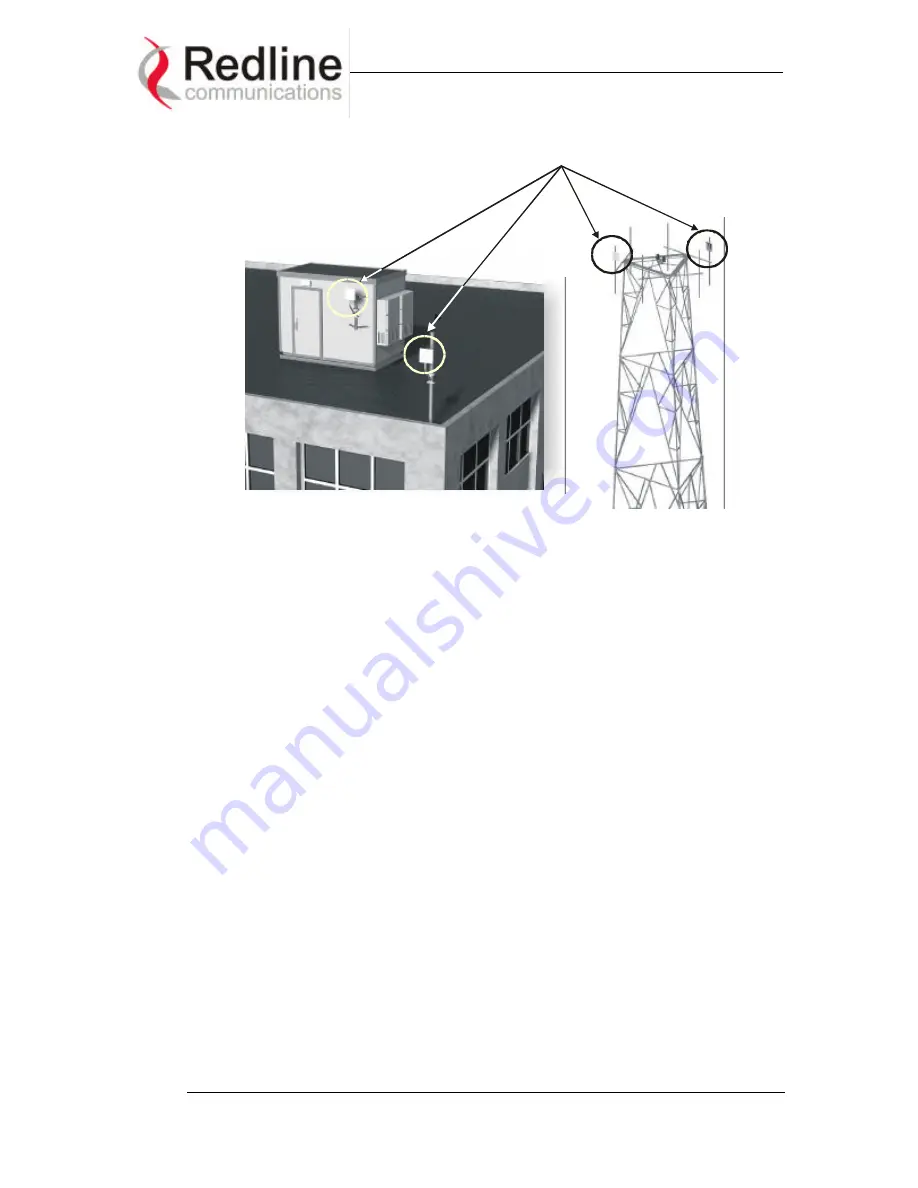
AN-50 User Manual
14/52
Red
line Communications
…..solving the first mile challenge
.
Transceiver
Deployments
Figure 4 Antenna deployment options.
Identify potential sources of RF interference.
Measure for any possible RF
interference on the roof-top or tower by utilizing a RF power meter or spectrum
analyzer. RF interference arises from any other wireless system operating within
the same frequency band of the AN-50. Note that the AN-50 can operate in any
one of the four channels designated for UNII band, therefore, there is some
flexibility in addressing or avoiding the interference should other transmitters, in
relatively close proximity, pose a problem.
Verify the location of access points.
With the remote terminal transmitting, use a
spectrum analyzer to ensure there is adequate signal strength arriving at the
candidate location for the antenna.
5.2.
Installing the Antenna
Once the site survey has been completed, and the exact location of the antenna
identified, the next step is to mount the AN-50 transceiver/antenna onto either a
building structure or pole. The antenna and mounting brackets have been designed
to withstand strong winds (see specifications at the end of this user guide). It is
imperative that all bolts and nuts are securely fastened to avoid any movement
that could introduce misalignment. Note that there is an arrow on the back of the
antenna, which must be pointing upwards to indicate proper orientation when the
antenna is deployed.


























